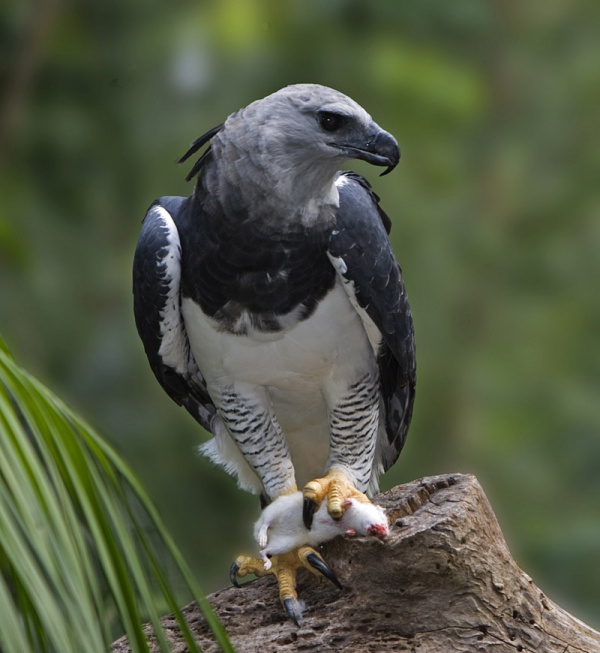Facts About Harpy eagle
The harpy eagle, often called the American harpy eagle, is a remarkable bird native to the tropical rainforests of Central and South America. Renowned as the largest and most powerful raptor in these regions, it belongs to the Accipitridae family, closely related to the crested eagle and the New Guinea harpy eagle. This majestic species was first described by Carl Linnaeus in 1758 and is named after the mythical creature, the harpy.
The harpy eagle is easily recognized by its striking appearance. It sports slate-black feathers on its back and white feathers on its belly. One of its most distinctive features is the double crest on its pale grey head, coupled with its massive talons, which make it a formidable predator. Interestingly, female harpy eagles are larger than males, typically weighing between 6 to 9 kg.
In terms of diet, harpy eagles primarily hunt tree-dwelling mammals such as sloths and monkeys. They also prey on birds, reptiles, and occasionally even domestic livestock.
Harpy eagles are monogamous and mate for life. They raise one chick every 2-3 years, constructing their nests high up in trees. The female typically lays two eggs, but usually, only one chick survives. This chick fledges at about 6 months old but continues to rely on its parents for food for several more months.
Unfortunately, harpy eagles face significant threats from habitat loss due to deforestation, hunting, and human encroachment. Fortunately, conservation efforts are underway in various countries to help protect and restore their populations.
Globally, the harpy eagle is considered near threatened and is critically endangered in Mexico and Central America. Despite these challenges, the bird holds a special place in popular culture. It is Panama's national bird and even appears on the country's coat of arms. The harpy eagle has also been featured in various media, including the Harry Potter film series and BBC documentaries.

 Guatemala
Guatemala